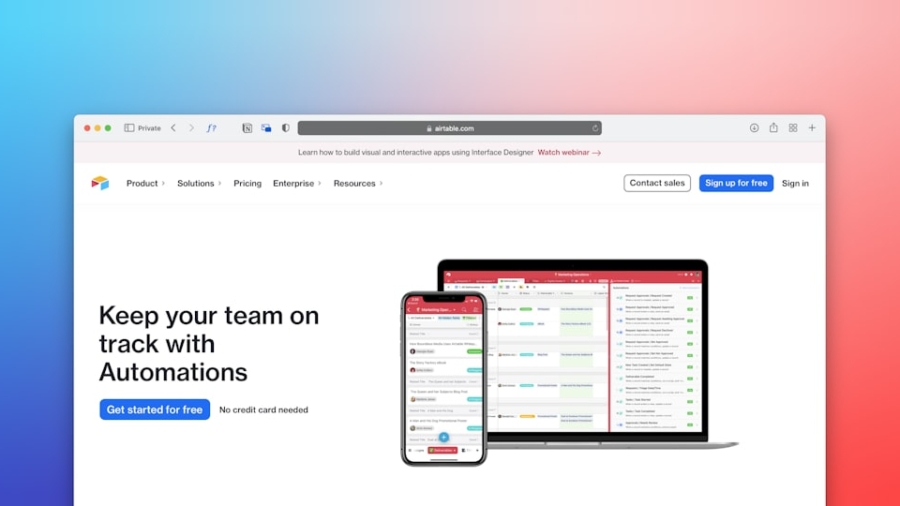In the modern business landscape, the need for effective collaboration has never been more critical. As organizations increasingly adopt remote and hybrid work models, cloud-based collaboration tools have emerged as essential resources that facilitate seamless communication and teamwork. These tools leverage cloud computing technology to allow users to access, share, and collaborate on documents and projects from virtually anywhere, provided they have an internet connection.
This flexibility not only enhances productivity but also fosters a culture of collaboration that transcends geographical boundaries. The rise of cloud-based collaboration tools can be attributed to several factors, including the proliferation of mobile devices, the increasing complexity of projects, and the demand for real-time communication. Businesses are no longer confined to traditional office spaces; instead, teams can work together in real-time, regardless of their physical locations.
This shift has led to a surge in the development and adoption of various collaboration platforms, each offering unique features designed to meet the diverse needs of organizations. As companies navigate this evolving landscape, understanding the capabilities and advantages of these tools becomes paramount for optimizing teamwork and achieving business objectives.
Key Takeaways
- Cloud-based collaboration tools are essential for modern businesses to work efficiently and effectively in a remote or distributed environment.
- When choosing a cloud-based collaboration tool, look for features such as real-time editing, file sharing, task management, and integration with other apps.
- Top cloud-based collaboration tools like Google Workspace, Microsoft 365, and Slack offer different features and pricing plans, so it’s important to compare them based on your business needs.
- Using cloud-based collaboration tools can lead to benefits such as improved communication, increased productivity, and easier access to files and information.
- To maximize productivity with cloud-based collaboration tools, establish clear communication protocols, set goals and deadlines, and provide training and support for employees.
Features to Look for in Cloud-Based Collaboration Tools
When evaluating cloud-based collaboration tools, it is essential to consider a range of features that can significantly impact their effectiveness. One of the most critical aspects is real-time editing capabilities. This feature allows multiple users to work on the same document simultaneously, with changes being reflected instantly for all collaborators.
Such functionality not only streamlines the editing process but also minimizes the risk of version control issues that can arise when team members work on separate copies of a document. Another vital feature is integration with other software applications. Many businesses rely on a suite of tools for various functions, such as project management, customer relationship management (CRM), and communication.
A cloud-based collaboration tool that seamlessly integrates with these applications can enhance workflow efficiency by allowing users to switch between platforms without losing context or productivity. Additionally, robust file-sharing capabilities are essential; users should be able to upload, download, and share files easily while maintaining control over permissions and access levels. Moreover, user-friendly interfaces are crucial for ensuring that all team members can navigate the tool effectively.
A steep learning curve can hinder adoption and reduce overall productivity. Therefore, intuitive design and clear navigation are key components that should not be overlooked. Finally, strong search functionality is important for quickly locating documents or conversations within the platform, especially as teams generate a significant amount of content over time.
Comparison of Top Cloud-Based Collaboration Tools

The market for cloud-based collaboration tools is diverse, with several prominent players offering unique features tailored to different organizational needs. Microsoft Teams stands out as a comprehensive solution that integrates chat, video conferencing, and file sharing within the Microsoft 365 ecosystem. Its ability to facilitate real-time collaboration on Office documents makes it particularly appealing for organizations already using Microsoft products.
Teams also offers robust security features and compliance options, making it suitable for enterprises with stringent data protection requirements.
With its channel-based messaging system, Slack allows teams to create dedicated spaces for specific projects or topics, fostering organized discussions.
The platform also supports numerous integrations with third-party applications, enhancing its versatility. However, while Slack excels in communication, it may require additional tools for comprehensive project management. Google Workspace (formerly G Suite) is another leading contender in the realm of cloud-based collaboration tools.
It offers a suite of applications including Google Docs, Sheets, and Drive, which enable real-time collaboration and easy sharing among team members. The simplicity of Google Workspace makes it particularly attractive for small to medium-sized businesses looking for an affordable yet powerful solution. However, some users may find its project management capabilities less robust compared to dedicated tools like Asana or Trello.
Lastly, platforms like Trello and Asana focus specifically on project management and task tracking. Trello employs a visual board system that allows teams to organize tasks using cards and lists, making it easy to track progress at a glance. Asana offers more advanced project management features such as timelines and workload management, catering to teams that require detailed planning and resource allocation.
While these tools excel in their respective areas, they may not provide the comprehensive communication features found in platforms like Microsoft Teams or Slack.
Benefits of Using Cloud-Based Collaboration Tools
The adoption of cloud-based collaboration tools brings numerous benefits that can transform how teams operate. One of the most significant advantages is enhanced flexibility. With cloud-based solutions, employees can access their work from any device with an internet connection—be it a laptop, tablet, or smartphone—allowing them to work from home, on the go, or in remote locations.
This flexibility not only accommodates diverse work styles but also helps organizations attract and retain top talent who value work-life balance. In addition to flexibility, cloud-based collaboration tools promote improved communication among team members. Traditional email communication can often lead to information silos and delayed responses; however, collaboration platforms facilitate instant messaging and real-time updates that keep everyone informed and engaged.
This immediacy fosters a culture of transparency and accountability within teams, as members can quickly share ideas, provide feedback, and resolve issues as they arise. Moreover, these tools often come equipped with analytics and reporting features that allow organizations to track performance metrics and assess team productivity. By analyzing usage patterns and engagement levels, managers can identify areas for improvement and make data-driven decisions to optimize workflows.
This level of insight is invaluable for organizations striving to enhance efficiency and achieve their strategic goals.
Tips for Maximizing Productivity with Cloud-Based Collaboration Tools
To fully leverage the potential of cloud-based collaboration tools, organizations should implement best practices that promote productivity among team members. First and foremost, establishing clear guidelines for communication is essential. Teams should define which channels to use for different types of discussions—such as using direct messaging for quick questions while reserving email for formal communications—to minimize confusion and ensure that important information does not get lost in the shuffle.
Additionally, regular training sessions can help team members become proficient in using the chosen collaboration tool. Familiarity with the platform’s features enables users to maximize its capabilities effectively. Organizations should consider creating a knowledge base or resource center where employees can access tutorials, FAQs, and best practices related to the tool.
Encouraging a culture of feedback is another critical aspect of maximizing productivity. Team members should feel empowered to share their experiences with the tool and suggest improvements or additional features that could enhance their workflow. Regular check-ins or surveys can help gauge user satisfaction and identify any pain points that need addressing.
Lastly, integrating project management methodologies such as Agile or Scrum can further enhance productivity when using cloud-based collaboration tools. By breaking projects into manageable tasks and utilizing features like task assignments and deadlines within the platform, teams can maintain focus and ensure accountability throughout the project lifecycle.
Security Considerations for Cloud-Based Collaboration Tools

While cloud-based collaboration tools offer numerous advantages, they also raise important security considerations that organizations must address to protect sensitive data. One primary concern is data privacy; businesses must ensure that their chosen platform complies with relevant regulations such as GDPR or HIPAA if they handle personal or sensitive information. Understanding how a provider manages data storage, encryption, and access controls is crucial in mitigating risks associated with data breaches.
Another critical aspect is user authentication and access management. Organizations should implement multi-factor authentication (MFA) to add an extra layer of security when accessing collaboration tools. Additionally, establishing role-based access controls ensures that team members only have access to information pertinent to their roles while safeguarding confidential data from unauthorized users.
Regular audits of user activity within the platform can also help identify any suspicious behavior or potential security threats early on. Many cloud-based collaboration tools offer built-in monitoring features that allow administrators to track logins, file sharing activities, and changes made to documents. By maintaining oversight of user actions, organizations can respond swiftly to any anomalies that may indicate security vulnerabilities.
Finally, it is essential for organizations to have a robust incident response plan in place in case of a security breach or data loss event. This plan should outline steps for containment, investigation, communication with stakeholders, and recovery processes to minimize disruption and protect organizational assets.
Case Studies: How Businesses are Using Cloud-Based Collaboration Tools
Numerous organizations across various industries have successfully implemented cloud-based collaboration tools to enhance their operations and drive innovation. For instance, a leading marketing agency adopted Microsoft Teams as its primary communication platform during the transition to remote work due to the COVID-19 pandemic. By utilizing Teams’ integrated video conferencing features alongside its document collaboration capabilities in Office 365, the agency was able to maintain client relationships and deliver projects on time despite physical distancing measures.
In another example, a global software development company leveraged Slack to improve communication among its distributed teams located in different countries. By creating dedicated channels for specific projects and topics, developers could share updates quickly while minimizing email overload. The integration of third-party applications such as GitHub allowed team members to receive real-time notifications about code changes directly within Slack, streamlining their workflow significantly.
A small nonprofit organization also found success using Google Workspace to manage its volunteer coordination efforts. By utilizing Google Docs for collaborative planning sessions and Google Calendar for scheduling events, the organization was able to enhance communication among volunteers while ensuring everyone remained informed about upcoming activities. The cost-effectiveness of Google Workspace allowed the nonprofit to allocate more resources toward its mission-driven initiatives rather than technology expenses.
These case studies illustrate how diverse organizations have harnessed cloud-based collaboration tools to overcome challenges related to remote work, improve communication efficiency, and ultimately achieve their goals more effectively.
Choosing the Right Cloud-Based Collaboration Tool for Your Business
Selecting the appropriate cloud-based collaboration tool requires careful consideration of your organization’s specific needs and objectives. Factors such as team size, project complexity, existing software integrations, and budget constraints will all play a role in determining which platform is best suited for your environment. By thoroughly evaluating available options against these criteria—while keeping in mind essential features like real-time editing capabilities, user-friendly interfaces, and robust security measures—you can make an informed decision that enhances your team’s productivity and fosters effective collaboration.
As businesses continue adapting to an increasingly digital landscape characterized by remote work arrangements and global teams, investing in the right cloud-based collaboration tool will be pivotal in driving success. The ability to communicate effectively across distances while maintaining high levels of engagement will ultimately determine how well organizations navigate challenges and seize opportunities in this dynamic environment.
In the realm of digital collaboration, cloud-based tools have become indispensable for teams working remotely or across different locations. The article “Review: The Best Cloud-Based Collaboration Tools” provides an insightful analysis of the top platforms that facilitate seamless communication and project management. For those interested in expanding their tech knowledge further, a related article worth exploring is Best Software Testing Books. This piece delves into essential literature for software testers, offering a comprehensive guide to mastering the intricacies of software quality assurance, which is crucial for ensuring the reliability of any collaborative software tool.
FAQs
What are cloud-based collaboration tools?
Cloud-based collaboration tools are software applications that allow multiple users to work together on documents, projects, and other tasks in real-time, regardless of their physical location. These tools are hosted in the cloud, meaning they can be accessed from any internet-connected device.
What are the benefits of using cloud-based collaboration tools?
Some of the benefits of using cloud-based collaboration tools include improved team productivity, easier access to files and documents, real-time communication and feedback, and the ability to work remotely or from different locations.
What are some popular cloud-based collaboration tools?
Some popular cloud-based collaboration tools include Google Workspace (formerly G Suite), Microsoft 365, Slack, Trello, Asana, Zoom, and Dropbox. These tools offer a range of features such as document sharing, project management, video conferencing, and instant messaging.
How do cloud-based collaboration tools enhance teamwork?
Cloud-based collaboration tools enhance teamwork by providing a centralized platform for team members to communicate, share files, and work on projects together. These tools also often include features for task assignment, progress tracking, and real-time updates, which can improve overall team coordination and efficiency.
What should I consider when choosing a cloud-based collaboration tool for my team?
When choosing a cloud-based collaboration tool for your team, consider factors such as the specific needs of your team, the features offered by the tool, ease of use, integration with other software applications, security measures, and cost. It’s important to select a tool that aligns with your team’s workflow and communication preferences.

